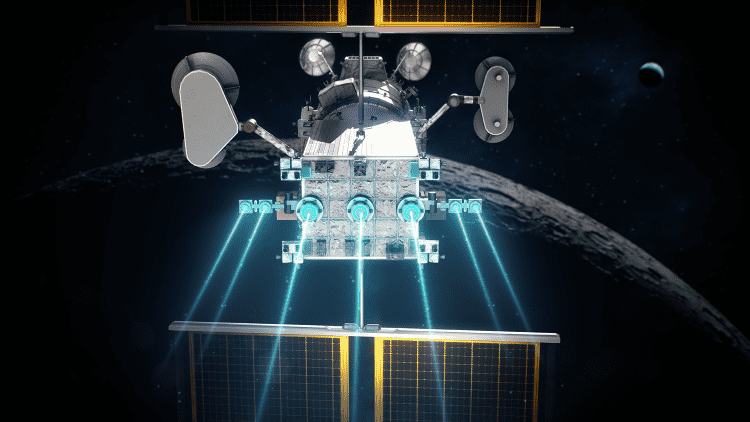NASA and aerospace company, Aerojet Rocketdyne, have successfully completed qualification testing of the Advanced Electric Propulsion System (AEPS), which is a 12-kilowatt, solar electric propulsion (SEP) engine being built for use for long-term space missions to the Moon and beyond, and AEPS is being touted as the most powerful electric propulsion—also called ion propulsion—thruster currently being manufactured. For context, 12 kilowatts are enough to power more than 1,330 LED light bulbs, and the success of these qualification tests come after NASA announced the beginning of qualification testing in July.
“AEPS is truly a next-generation technology,” Clayton Kachele, who is the AEPS project manager at NASA’s Glenn Research Center, said in the July statement prior to qualification testing. “Current electric propulsion systems use around four and a half kilowatts of power, whereas here we’re significantly increasing power in a single thruster. That capability opens a world of opportunity for future space exploration, and AEPS will get us there farther and faster.”
The blue exhaust plume from the AEPS seen during these qualification tests is produced from ionized xenon gas, hence its ion propulsion name. While traditional chemical propulsion uses liquid propellants as fuel to produce very short but very powerful blasts of energy to propel a spacecraft in its desired direction, electric propulsion uses inert gas propellants as fuel, resulting in less energy but a much longer duration, resulting in greater efficiency, which could be useful for long-term space missions.
The goal is to use AEPS on NASA’s upcoming Gateway space station by mounting three AEPS thrusters on Gateway’s Power and Propulsion Element, which will be responsible for providing an assortment of duties, including maintaining Gateway’s desired orbit around the Moon, high-rate communications between Earth, and power for the entire orbiting outpost. Due for an expected launch in 2025, Gateway will be a collaboration between international and commercial partners as an essential piece for NASA’s upcoming Artemis missions to the lunar south pole in the next few years. While Gateway is the current goal for AEPS, the thrusters could potentially be used on deep space missions, as well.
 Artist rendition of NASA’s Gateway with its AEPS thrusters. (Credit: NASA)
Artist rendition of NASA’s Gateway with its AEPS thrusters. (Credit: NASA)
“I think it’ll be exciting to see what kind of missions this technology ends up enabling,” Rohit Shastry, who is the lead engineer on AEPS, said in the July statement prior to qualification testing. “We are pushing the boundaries of what’s been done and taking giant leaps forward with capability and opportunities.”
While AEPS is a solar electric engine, the other type of electric propulsion engine is nuclear electric propulsion (NEP), which uses a nuclear reactor to generate thrust, as opposed to solar power. Additionally, while AEPS is currently the most powerful electric propulsion thruster currently being manufactured, this is not the first time NASA has used electric propulsion on deep space missions. NASA’s Dawn mission to Ceres and Vesta was the first science mission to use an ion propulsion system. Most recently, NASA’s Psyche mission, which successfully launched on October 13, in using solar electric propulsion to make the 3.6-billion-kilometer (2.2-billion-mile) journey to asteroid 16 Psyche.
How will AEPS help NASA’s Gateway achieve its goals, and how will electric propulsion systems continue to advance in the coming years and decades? Only time will tell, and this is why we science!
As always, keep doing science & keep looking up!

